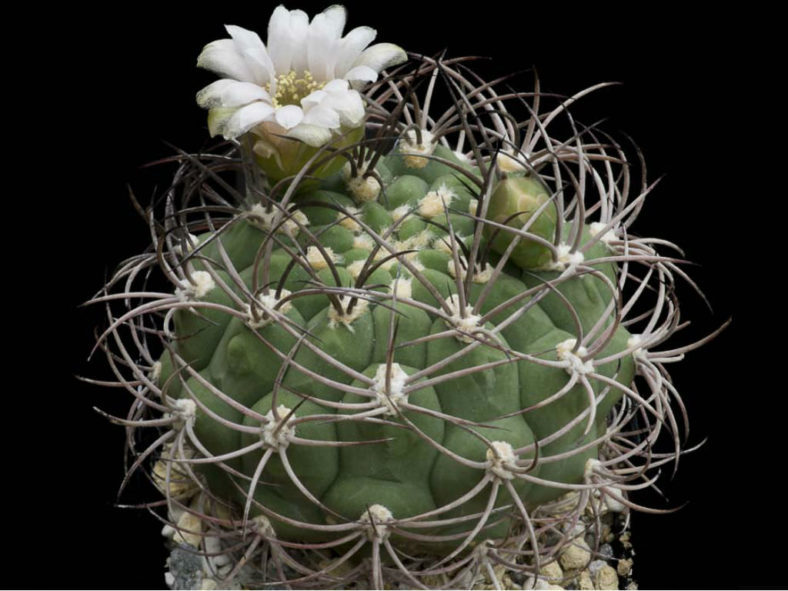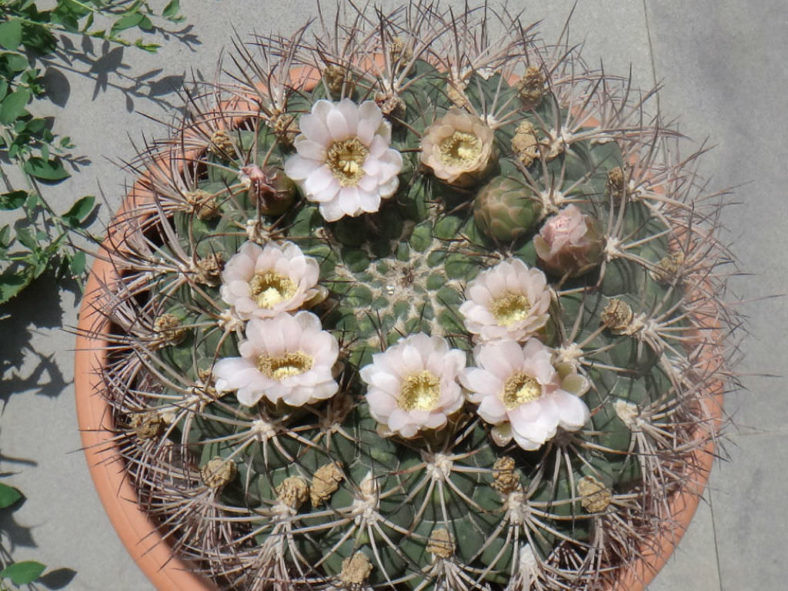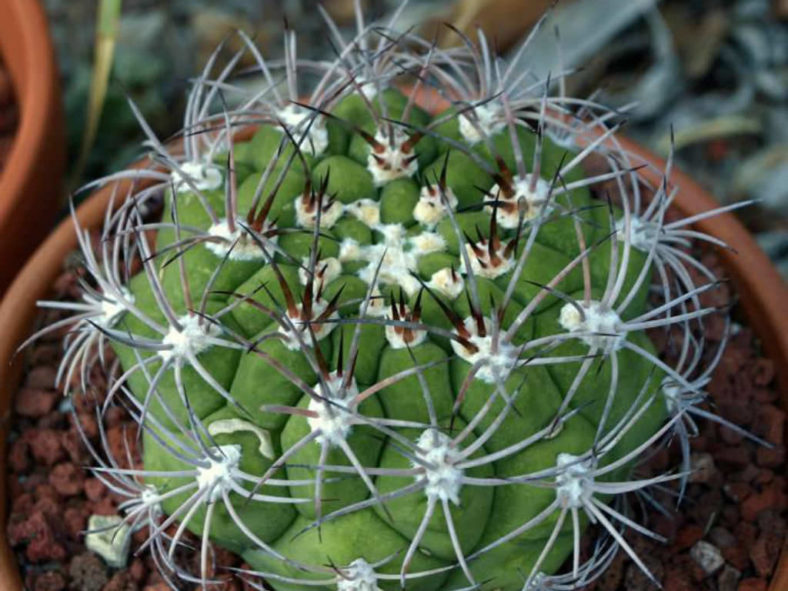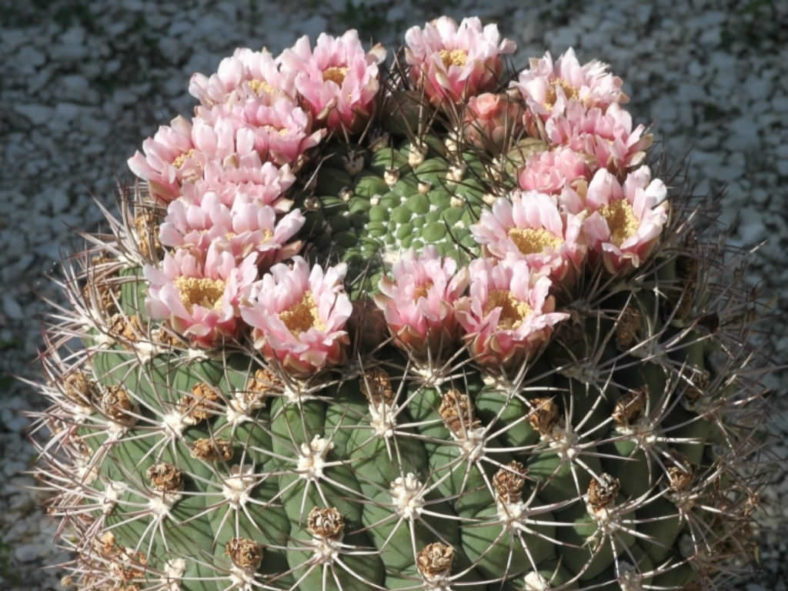Scientific Name
Gymnocalycium saglionis (F.Cels) Britton & Rose
Common Name(s)
Giant Chin Cactus
Synonym(s)
Echinocactus saglionis
Scientific Classification
Family: Cactaceae
Subfamily: Cactoideae
Tribe: Trichocereeae
Genus: Gymnocalycium
Etymology
The specific epithet "saglionis (SAG-lee-oh-nis)" honors Joseph Saglio, an important cactus collector in France around 1840.
Origin
Gymnocalycium saglionis is endemic to northwestern Argentina. It grows on rocky soil with other low vegetation in Salta, Tucuman, Catamarca, La Rioja, and San Juan.
Description
Gymnocalycium saglionis is a slow-growing cactus with a solitary, barrel-shaped, dull green to blue-green stem with 10 to 32 tuberculate ribs lined with clusters of stout, recurved spines. The stem can grow up to 3 feet (90 cm) tall and 16 inches (40 cm) in diameter. The spines range from yellowish-brown and reddish to black and become grey with age, reaching 1.6 inches (4 cm) in length. Each areole bears 1 to 3 central and 10 to 15 radial spines.
The flowers are white or pinkish with a red throat and can reach up to 1.6 inches (4 cm) long and 1.2 inches (3 cm) in diameter. They appear in early summer, often forming a ring at the crown of the stem. The fruits are reddish or dark pink, spherical, and contain tiny, shiny, black to dark brown seeds.

Hardiness
USDA hardiness zones 9b to 11b: from 25 °F (−3.9 °C) to 50 °F (+10 °C).
How to Grow and Care
Some Gymnocalyciums are shade-seeking in the wild, among shrubs or grasses, while others grow entirely exposed. Therefore, some will need light shading from the sun in the hottest months, but to overdoing this will result in the loss of flowers.
The potting medium's balance should be sufficient to allow good drainage so that the plants do not sit in soggy soil for more than a day or two after watering.
Watering in the summer months, while the plants are growing well, can be frequent (weekly for small plants in small pots), but always allow the compost to nearly dry out before rewatering. Watering in the winter months is unwise and certainly not necessary. The difficult times are spring and autumn.
Those species which produce offsets can be readily propagated by cuttings. Gymnocalycium seed germinates well when fresh and will keep for a few years if stored in cold conditions.
See more at How to Grow and Care for Gymnocalycium.
Links
- Back to genus Gymnocalycium
- Succupedia: Browse succulents by Scientific Name, Common Name, Genus, Family, USDA Hardiness Zone, Origin, or cacti by Genus
Photo Gallery
Click on a photo to see a larger version.


